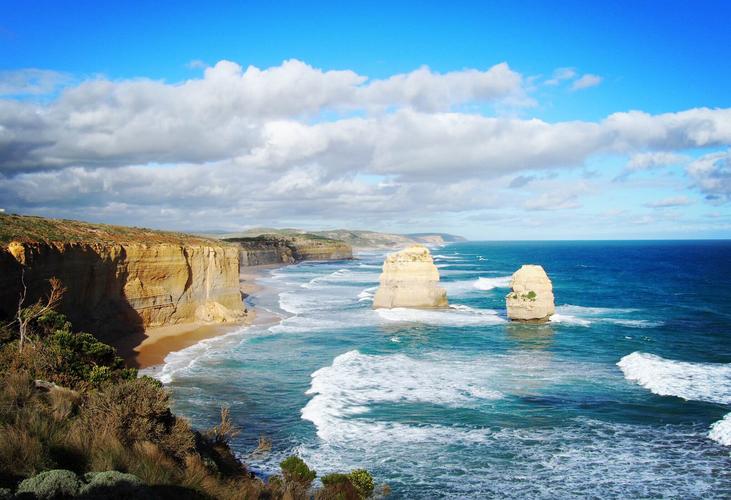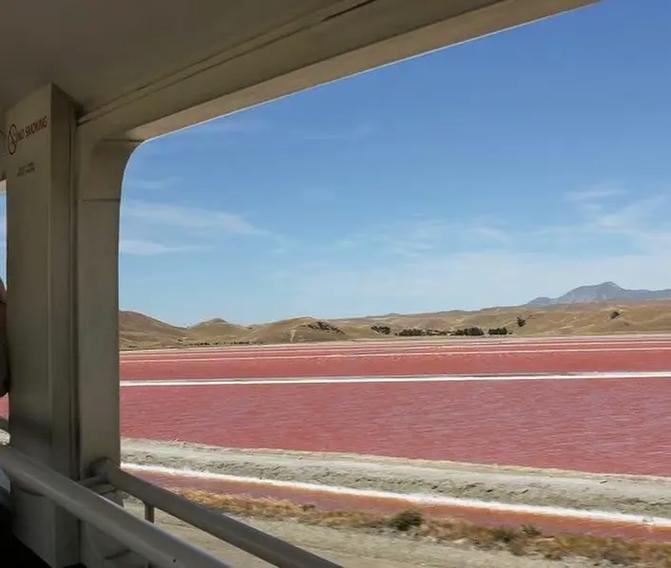Global Travel Information
Baja California Desert, Mexico
The Enigmatic Beauty of the Baja California Desert, Mexico
Stretching along the northern half of the Baja California Peninsula in Mexico, the Baja California Desert is a land of stark contrasts, rugged beauty, and remarkable biodiversity. This arid region, part of the larger Sonoran Desert, is a place where the relentless sun scorches the earth, yet life thrives in unexpected ways. From towering cacti to elusive wildlife, the desert is a testament to nature’s resilience and adaptability.

A Harsh Yet Fragile Ecosystem
The Baja California Desert is characterized by its extreme climate—scorching summers with temperatures often exceeding 40°C (104°F) and mild winters that occasionally dip near freezing. Rainfall is scarce, averaging less than 250 mm (10 inches) annually, and much of it evaporates before it can nourish the parched soil. Despite these harsh conditions, the desert supports a surprising variety of life, much of it uniquely adapted to survive here.
One of the most iconic plants of this region is the cardón cactus (Pachycereus pringlei), the tallest cactus in the world, reaching heights of up to 20 meters (65 feet). These giants dominate the landscape, their ribbed structures expanding to store precious water during rare rains. Another notable species is the boojum tree (Fouquieria columnaris), a bizarre, spindly plant that looks like something from a Dr. Seuss book. Its twisted form and minimal leaves help it conserve water in the unforgiving desert.
Wildlife of the Baja Desert
The desert’s fauna is just as fascinating as its flora. Among the most elusive creatures is the peninsular pronghorn (Antilocapra americana peninsularis), one of the fastest land mammals in North America but now critically endangered due to habitat loss. Coyotes, kit foxes, and desert bighorn sheep also roam these lands, each adapted to the scarcity of water and food.
Reptiles thrive in the heat, with species like the Baja California rattlesnake (Crotalus enyo) and the desert iguana (Dipsosaurus dorsalis) blending seamlessly into the rocky terrain. Birds, too, have found ways to survive—roadrunners dart between shrubs, while golden eagles soar overhead, scanning for prey.
The Desert’s Hidden Waterways
Contrary to its dry reputation, the Baja California Desert is not entirely devoid of water. Hidden beneath the surface are arroyos—seasonal streams that fill briefly after rare storms. These temporary waterways create oases where plants and animals congregate. In some areas, natural springs sustain small pockets of lush vegetation, providing critical refuge for wildlife.
One of the most famous desert oases is Cataviña, a surreal landscape where granite boulders are strewn across the desert floor, and palm trees rise unexpectedly from the dry earth. This area is a hotspot for biodiversity, attracting researchers and nature enthusiasts alike.
Human Presence and Cultural Heritage
Long before modern settlers arrived, indigenous peoples such as the Cochimí and Kumeyaay thrived in this harsh environment. They developed intricate knowledge of the land, using native plants for food, medicine, and tools. Today, their descendants preserve some of these traditions, though much of their way of life has been lost to time.
European colonization brought drastic changes. Spanish missionaries established missions in the 17th and 18th centuries, some of which still stand today, like Mission San Francisco de Borja Adac, one of the best-preserved in Baja California. These missions introduced agriculture and livestock, altering the desert’s ecology forever.
Modern settlements are sparse, with small towns like San Felipe and Bahía de los Ángeles dotting the coastline. These communities rely on fishing, tourism, and limited agriculture. Off-road vehicles and illegal poaching, however, pose threats to the fragile desert ecosystem.
Conservation Challenges
Despite its resilience, the Baja California Desert faces numerous threats. Climate change is exacerbating droughts, making water even scarcer. Urban expansion and unchecked tourism contribute to habitat destruction. Illegal wildlife trade and overgrazing by livestock further strain the delicate balance of this ecosystem.
Efforts to protect the desert are underway. Organizations like Pronatura Noroeste work to establish protected areas and promote sustainable land use. The Valle de los Cirios is one such reserve, safeguarding thousands of square kilometers of pristine desert. Ecotourism is also gaining traction, offering visitors a chance to experience the desert’s beauty responsibly.
Exploring the Baja California Desert
For adventurous travelers, the Baja California Desert offers unparalleled experiences. The Transpeninsular Highway (Mexican Federal Highway 1) cuts through the heart of the desert, providing access to remote landscapes. Off-the-beaten-path destinations like Sierra de San Pedro Mártir National Park feature pine forests at higher elevations, a stark contrast to the arid lowlands.
Stargazing here is phenomenal—the desert’s clear skies and minimal light pollution make it one of the best places in the world to observe the Milky Way. The Observatorio Astronómico Nacional in San Pedro Mártir takes advantage of these conditions for astronomical research.
Conclusion: A Desert Worth Protecting
The Baja California Desert is more than just a barren wasteland—it is a living, breathing ecosystem teeming with life. Its stark beauty, unique species, and cultural significance make it a treasure worth preserving. As climate change and human activity threaten its future, conservation efforts must intensify to ensure that this remarkable desert endures for generations to come.
For those willing to venture into its vast expanse, the Baja California Desert offers a profound connection to nature—one that inspires awe, respect, and a deeper understanding of our planet’s fragile beauty.
相关文章
- Elbe River Archaeological Sites: Ancient Finds Near the Water
- Elbe River Botanical Gardens: Flowers & Plants Along the Banks
- Elbe River Zoos & Aquariums: Family Fun Near the River
- Elbe River Amusement Parks: Rides with River Views
- Elbe River Camping Spots: Pitch a Tent by the Water
- Elbe River Glamping Sites: Luxury Camping Along the Banks
- Elbe River RV Parks: Stay in Your Camper Near the River
- Elbe River B&Bs: Cozy Accommodations with a Personal Touch
- Elbe River Hostels: Budget Stays for Young Travelers
- Elbe River Business Travel Guide: Meetings & Events Near the Water
发表评论
评论列表
- 这篇文章还没有收到评论,赶紧来抢沙发吧~


